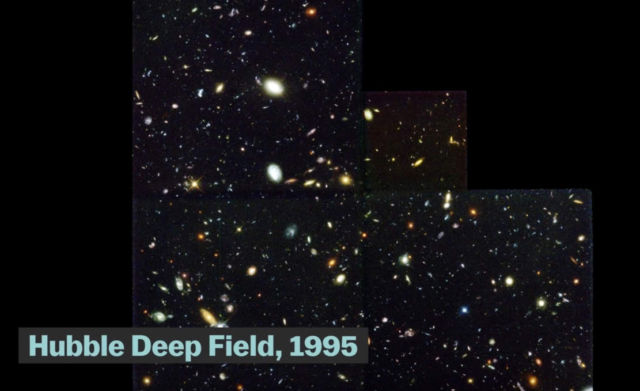The iconic 1995 image is crowded, not because it’s a broad swath of sky but because it’s a broad swath of time. The Hubble Deep Field is more than 12 billion light-years deep.
If you hold a pin at arm’s length up in the air, the head of the pin covers approximately the amount of sky that appears in the Hubble Deep Field.
Robert Williams was the director of the Hubble’s science institute back in 1995, and it was his decision to attempt a deep field observation with the telescope. Previous calculations had indicated that Hubble would not be able to detect very distant galaxies, but Williams figured they’d never know unless they tried.
His team chose a completely dark part of the sky, in order to see beyond the stars of the Milky Way, and programmed Hubble to stare at that spot for 10 days. It was unusual to use precious observing time to point the telescope at nothing in particular, but that’s what they did.
“We didn’t know what was there, and that was the whole purpose of the observation, basically — to get a core sample of the universe,” Williams said, borrowing the concept of the “core sample” from the earth sciences.
“You do the same thing if you’re trying to understand the geology of the Earth: Pick some typical spot to drill down to try to understand exactly what the various layers of the Earth are and what they mean in terms of its geologic history.”
[Youtube]






Leave A Comment